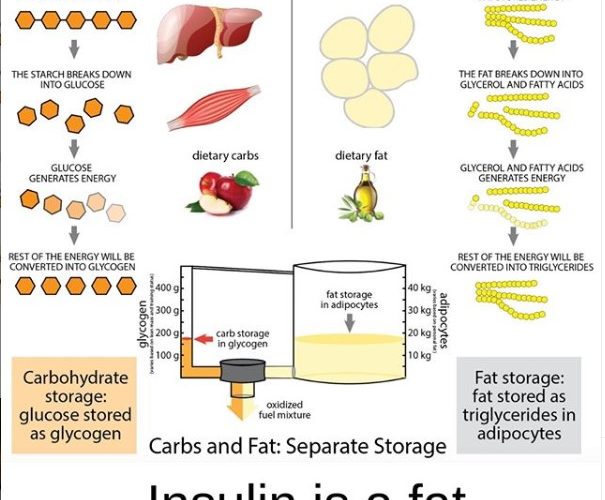The more insulin you have, the more fat you accumulate.
Insulin activates the enzyme hexokinase, which phosphorylates glucose, trapping it within the cell, (and inhibits the activity of glucose-6-phosphatase, preventing phosphorylated glucose from being returned to glucose). Insulin also activates several of the enzymes that are directly involved in glycogen synthesis, including phosphofructokinase and glycogen synthase. The net effect of insulin in the presence of an abundant supply of glucose, the liver quickly uptakes glucose and stores it as glycogen, which reduces serum glucose levels. The serum carrying capacity of glucose is approximately 5gm.
As glycogen storage capacity exceeds approximately 500gm (approximately 2,000 calories), the overflow is shunted to lipid. Failing to deplete the glycogen reserve prior to refeeding results in shunting of glucose to lipid. When the liver is saturated with glycogen, any additional glucose taken up by hepatocytes is shunted into pathways leading to the synthesis of fatty acids, which are exported from the liver as lipoproteins. The lipoproteins provide free fatty acids for use in other tissues, including adipocytes, which use them to synthesize triglycerides. Insulin inhibits the breakdown of fat in adipose tissue by inhibiting the intracellular lipase that hydrolyzes triglycerides to release fatty acids.
Insulin facilitates the entry of glucose into adipocytes, and within those cells, glucose can be used to synthesize glycerol. This glycerol, along with the fatty acids delivered from the liver, is used to synthesize triglyceride within the adipocyte.






